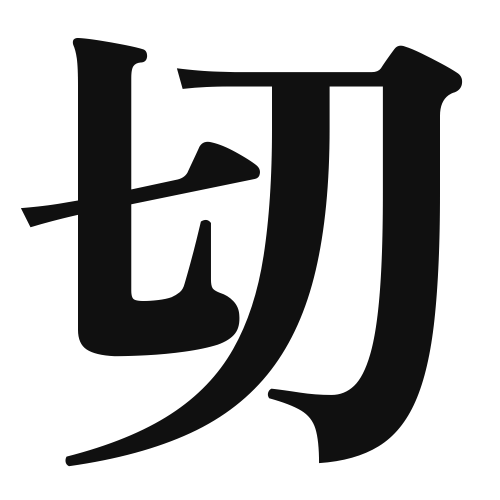1. Overview of Meaning
The kanji “切” (pronounced “setsu” or “kiru”) primarily means “to cut” or “to sever.” It can also imply a sense of “to break” or “to divide.” This character is commonly used in various contexts, from physical cutting to metaphorical meanings such as cutting ties or relationships.
2. Formation and Radical
Formation of the Kanji: The kanji “切” is a phono-semantic compound (形声文字), which means it combines both a phonetic and a semantic component. The left part, “刀” (meaning “sword” or “knife”), indicates the meaning related to cutting, while the right part provides the pronunciation.
Radical: The radical for “切” is “刀” (katakana: かたな), which is associated with tools or actions related to cutting.
3. Examples of Usage
Common Words and Phrases: Some frequently used words that include “切” are:
- 切る (きる, kiru) – to cut
- 切符 (きっぷ, kippu) – ticket
- 切れ (きれ, kire) – a piece or a slice
Example Sentences in Daily Conversation:
- この野菜を切ってください。 (このやさいをきってください。) – Please cut this vegetable.
- 切符を買うのを忘れました。 (きっぷをかうのをわすれました。) – I forgot to buy a ticket.
4. Synonyms and Antonyms
Similar Kanji: A similar kanji is “断” (だん, dan), which also means “to cut” but carries a stronger connotation of “to sever” or “to break off.” While “切” can refer to cutting in a more general sense, “断” often implies a more definitive or forceful action.
Opposite Kanji: An antonym for “切” is “繋” (けい, kei), which means “to connect” or “to tie.” This represents the opposite action of cutting or severing.
5. Cultural and Historical Background
Relation to Japanese Culture: The concept of cutting is significant in various aspects of Japanese culture, including traditional arts like origami and calligraphy, where precision in cutting is essential.
Proverbs and Idioms: One common idiom is “切りがいい” (きりがいい, kiriga ii), which means “a good stopping point” or “a good cut-off point,” often used to indicate a suitable moment to pause or conclude an activity.
